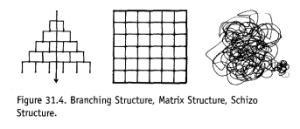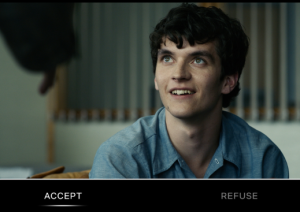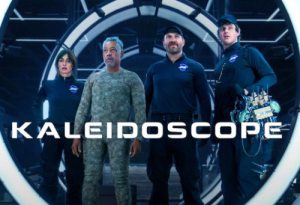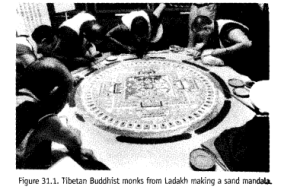Bill Viola give a pretty close speculation of the more creative reorganization of presenting film we have been seeing in today’s society. He relates ideas of our own self development through self reflection similarly to how we may turn to the film we capture and rethink its purpose or arrangement. The greatest connection he drives is “Today, development of self must precede development of the technology or we will go nowhere—there will be condominiums in data space (it has already begun with cable TV)”(Viola pg. 14). And in the case of Bandersnatch taking the idea of a choose your own adventure with the intention of finding multiple paths and routes to explore, it itself is a reflection of the condominiums in how we can change the approach we take to engaging in observing and consuming film.

The way we structure our films are important as it will ensure audiences has a comfortable and entertaining experience so they can have as many take always as possible. This is what leads us to favor the approach of very linear storytelling as its easiest to consume and present information. However, in cases like Bandersnatch and other choose your own adventure stories, it almost makes the goal or message of the film to encourage the non linearity and loops as a reflection of the very choices we make seeming more impactful when we know the array of choices we could witness. We have been at odds with how we can present these ideas without audiences feeling too taken aback or confused as stated “artists know that there must be more out there than this. Even though the technology is interactive, this is still the same old linear logic system in a new bottle”(Viola pg 11)

Bandersnatch is similar to this as although it encourages going back and forward to find other routes, thats still linearly moving forward and back. Only rarely do we see a flashback of his childhood and it being primed so that the audiences is guided to that instance and put right back where they left off. It is for this reason I still find Bandersnatch entertaining rather than tedious from a viewer perspective. But that doesn’t mean I still think that linearity is the only way we can or should go about creating film works. Its for this very reason I give praise to Kaleidoscope on Netflix as its whole purpose is to an arrange a random order for people to view and then experience to find out the big picture. Its like putting a puzzle together, there isn’t a correct place to start, you just slowly start connecting ideas until you get the full picture.

I believe that aiming towards more creative ways of compiling footage and unique storytelling is a direction we are headed that can point to new possibilities for viewers. But as of right now we are in a place of worrying that if we embrace too much interactivity and non linearity, we are at risk of viewers being overwhelmed with choice and thinking that the ideas presented are to disjointed. Not to mention with attention spans getting lower and lower overtime, if things aren’t interesting or apparent right off the bat, people will just lose interest. We as people still crave structure and organization, thus “visual diagrams of data structures already being used to
describe the patterns of information on the computer video disc. The most common one is called “branching,” a term borrowed from computer science”(Viola pg. 11). And as we work with film, we know the linearity of time always moving forward, even if you play footage in reverse, the time on the video will still always count forward. We have rules we need to abide by while working to creatively bend them.

Viola also made a point to draw connections to sacred art (as seen above) that works to challenge the simplicity of the choose your own adventure approach as a nonlinear form of storytelling. Within the image shows a Japanese shaman called itako that which calls upon spirits to communicate with them. This form of communication “without the aid of wires or hardware of any sort, have been for ages regularly communicating through time and space with ancestors long gone”(Viola pg. 4). They encouraged the mapping of space in the mind known as “the walk through Hell” to bring spirits along towards familiar paths. Sacred arts like these transport what would be a “viewer” to go across space and time through the mindscape in order to experience something non linearly. The choice of going down the path is so vast in one being to stay right where you are and the other to go what would be to a different world in a single decision.
It is my believe that the technologies we are working with to increase interactivity will become more advanced in time, but we are still in the early day basics. We as a culture are not yet at the place of suspending disbelief as easily if it doesn’t follow the rules we are familiar with (abiding by space and time linearly). But this doesn’t mean we haven’t been trying or working to break this mold. electronic literature writers have been working to create non linear works through key words and multimedia methods of creating experiences that often seem disjointed. If we are able to apply the puzzle framework to viewers to challenge them to witness more thought provoking ideas, we could see the age that advance storytelling methods like these are normalized and can be more personal and investing experiences.
-Rylan Eisenhauer